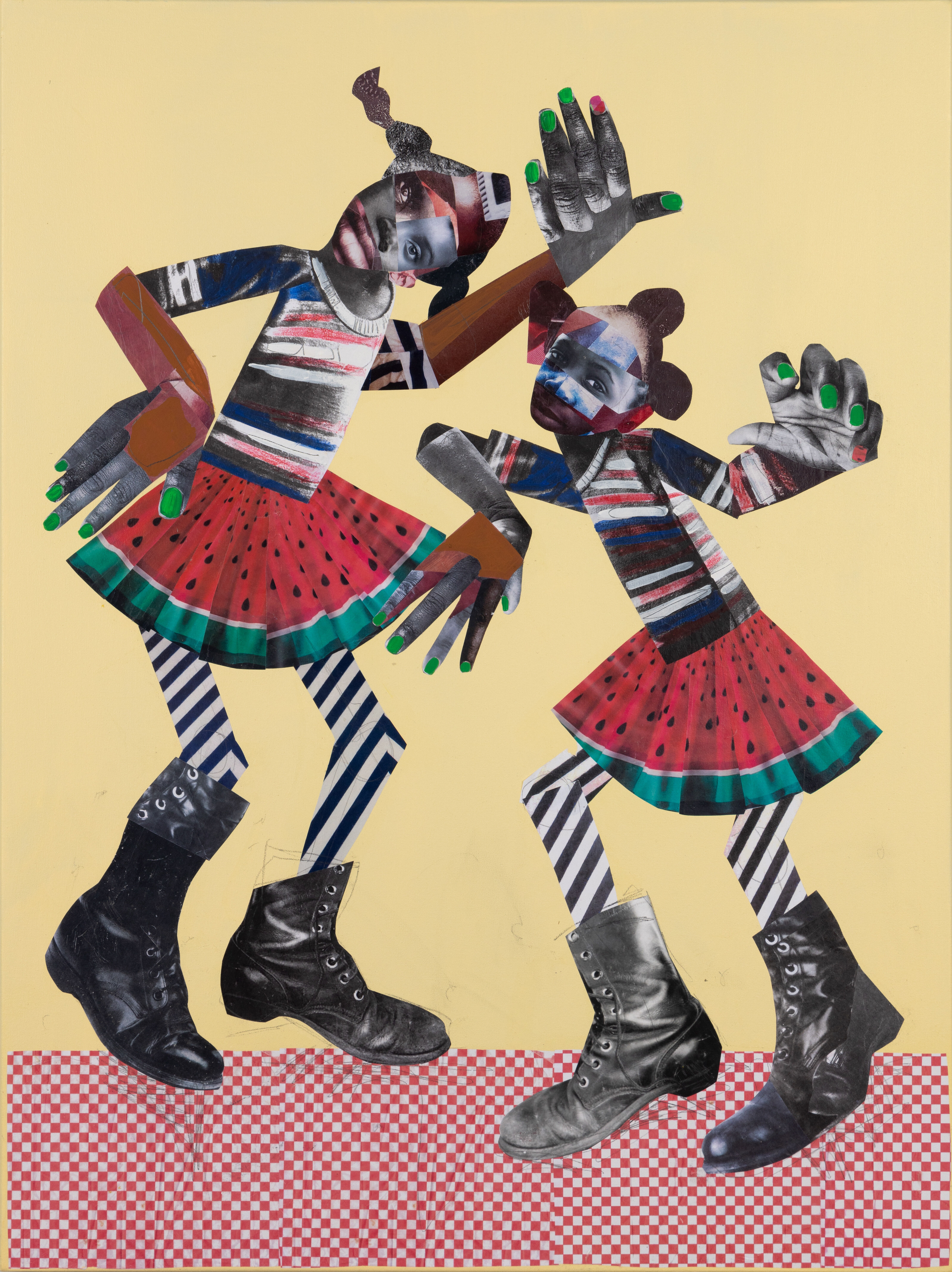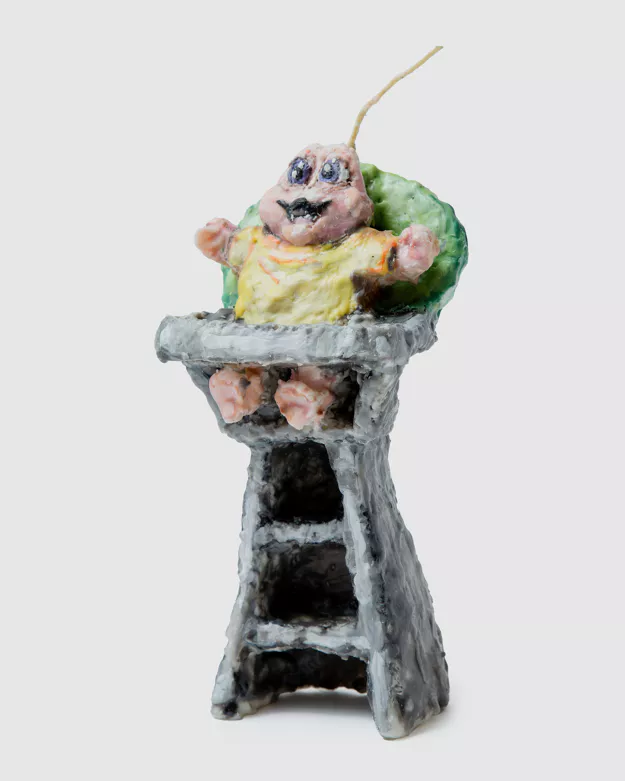About the artwork:
This collage is part of a series inspired by the God Dust twins and Black Americana. These works draw extensively from the artist's Southern Black American heritage. For these compositions on paper, the artist uses archival images of Black children—most often girls—along with acrylic paint and colored pencils. These works—inspired by historical research, personal experience and everyday encounters—reveal the complexity, physical beauty and internal elegance of their young Black female subjects along with their unique experiences. The emotional, physical, and psychological implications of the subjects reflect racial, political, and social concerns that Edwards has experienced firsthand. In each work, the subject is an iteration of the artist at various ages—navigating the isolating tension of being artistically inclined, Black and female in a larger social context that rarely celebrates these categories. Speaking of this series, the artist says: "Growing up I was often the only black girl participating in 'white folks stuff.' I always wondered whether I was truly being viewed as an equal or whether I was a part of 'the Black collection.'"
The recurring black and white stripes along the subjects’ arms and legs represent the pattern of Black expression being interjected by white, Southern expectations in a seemingly endless cycle; they also evoke the liminal state that Edwards has embodied since childhood. The manner in which the artist proportions the figures in these composition is greatly influenced by William Christenberry—an artist native to western Alabama. Christenberry is well known for his photographs depicting isolated objects within landscapes, as well as artistic exploration of the "psychology of place.” In Edwards's work, the faces of most of the subjects appear emotionless. The subjects seem ambivalent, yet deeply aware—hesitant to engage in their environment. However, the vibrant, multi-textured nature of their flared skirts signifies the figures' inherent playfulness; this detail directly contrasts with the restrictive, Pentecostal upbringing Edwards experienced as a youth.
About the artist:
Multi-disciplinary artist Lynthia Edwards is best known for her collages that explore the complex emotions and experiences of Black girls living in the American South. In these works, the artist’s subjects are versions of her younger self; she sources images from her current life both to channel the racial and gendered isolation she experienced as a child, as well as express the strictness of her Pentecostal upbringing. Edwards’ work examines the emotional, physical and psychological implications of her subjects—reflecting racial, political and social concerns that the artist has experienced firsthand.
BIO:
Lynthia Edwards was born in Alexander City, Alabama in 1978. The artist received an AA in Graphic Design from the Art Institute of Atlanta in Georgia in 1998, a BA in Art Education from Auburn University of Montgomery in Alabama in 2002, and an MA in Art Education from the University of Alabama at Birmingham in Alabama in 2012.
Exhibitions of Edwards’ work have taken place at: Untitled Art Miami Beach in Florida (2021); the Gadsden Museum of Art in Gadsden, Alabama; and the Tennessee Valley Museum of Art in Tuscumbia, Alabama.
Edwards participated in the Gee’s Bend Quilters Retreat at the Alabama Folk
School in Nauvoo, Alabama in 2019. The artist subsequently exhibited alongside famed quilters Tinnie and Minnie Pettway and Claudia Pettway Charley in Good Trouble: Civil Rights Past and Present at the Kentuck Art Center in Northport, Alabama (2021).
Edwards’ work can be found in numerous public collections, as well as the private collections of: philanthropist Beth Rudin DeWoody; businessman Ric Lewis; and finance executive Reginald Browne.
The artist is currently represented by Richard Beavers Gallery, New York.
Edwards was the recipient of the Purchase Award from the Alabama Art Colony in both 2005 and 2006. The artist was awarded “Best of Show” in the Montgomery Art Guild and Regions Bank Exhibition in 2019. In 2021, Edwards received the Alabama State Council for the Arts Fellow Award.
Edwards taught art for 13 years to adjudicated male offenders at the Alabama Department of Youth Services School District in Mount Meigs, Alabama.
Edwards lives and works in Birmingham, Alabama.






